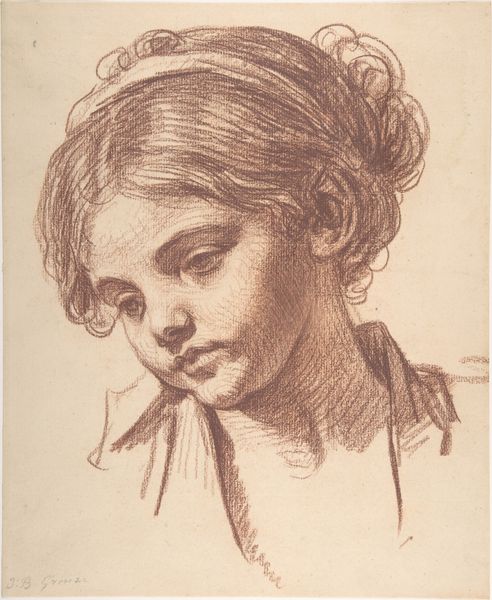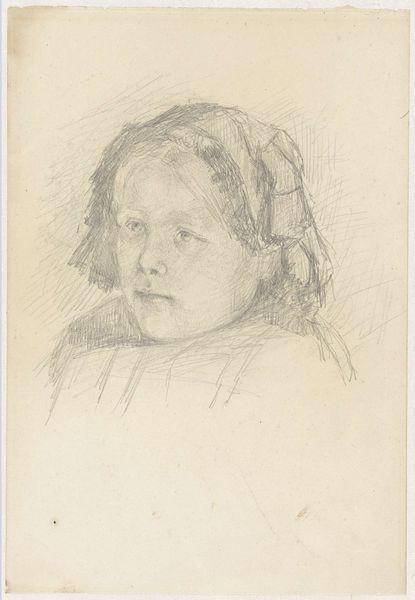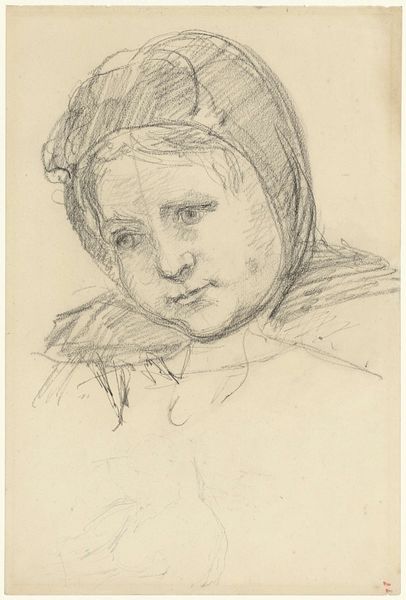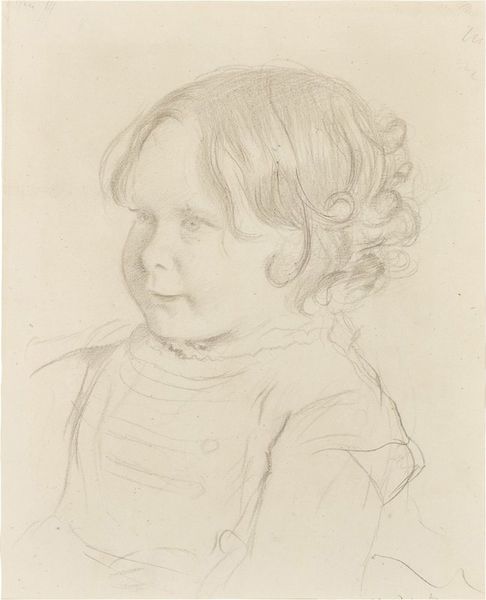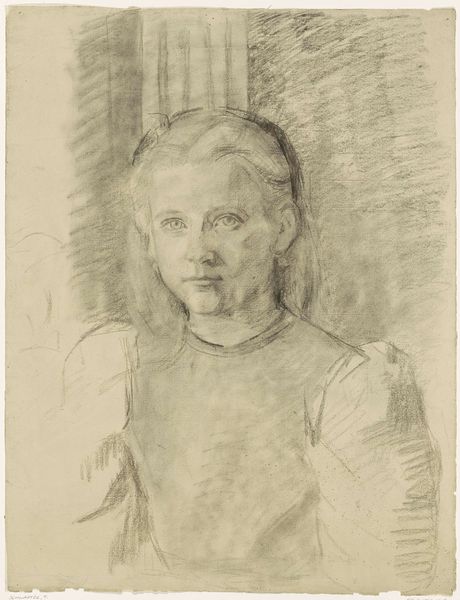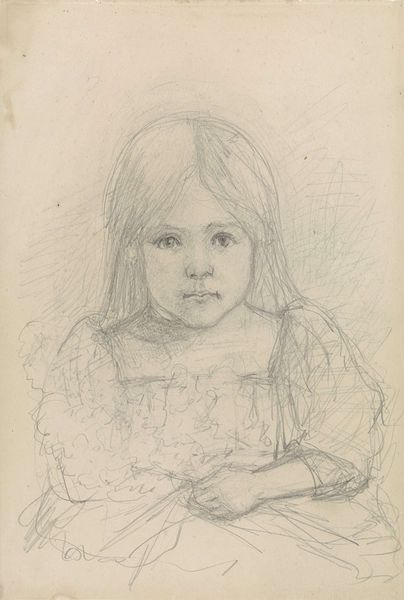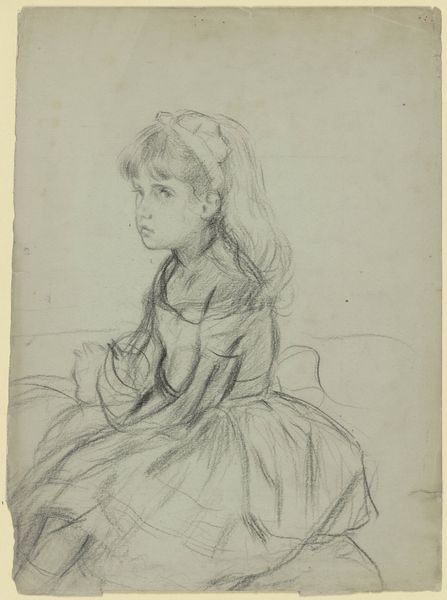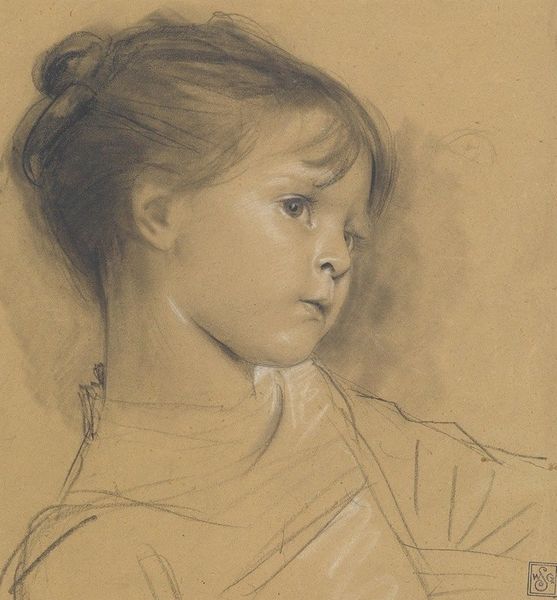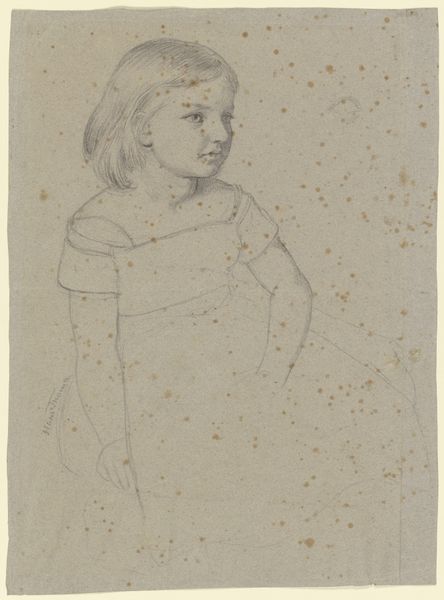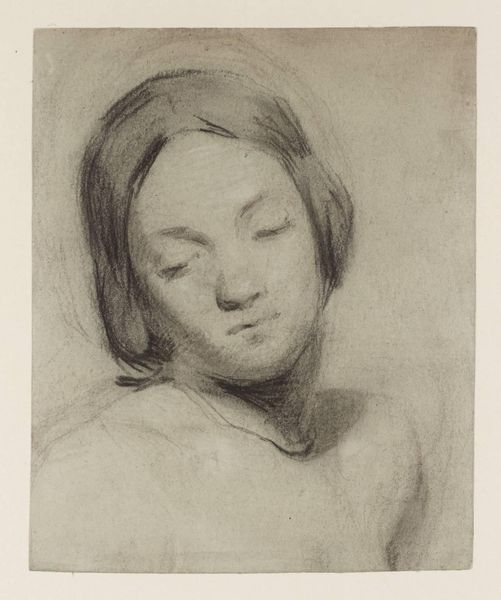
Dimensions: 53 x 40.5 cm
Copyright: Public domain
Curator: Theo van Rysselberghe’s “Mademoiselle Nele Van de Velde,” created in 1903, presents a delicate rendering of a young girl. It is held in a private collection, so it’s a real treat that we can see it here today. Editor: It’s a quick, almost ephemeral sketch in pencil. It gives the impression that Rysselberghe wanted to capture a fleeting moment, perhaps when Nele wasn’t aware she was being observed. I notice the softness of the shading in her face and clothing—it’s remarkable how he coaxes so much volume and texture from what are ultimately just pencil lines. Curator: The Van de Velde family, including little Nele here, were at the heart of the Belgian artistic and intellectual avant-garde at the time. Henry van de Velde was an influential architect and designer and part of a burgeoning art world which challenged many academic norms. It's interesting how Rysselberghe uses what feels like an informal medium to create what would have been seen, socially, as quite a formal portrait. Editor: Exactly! It feels intimate despite being a commission, which are always interesting for revealing economic relationships between artist, sitter, and commissioner. The visible marks, the process itself, become part of the artwork's story. Also, the seemingly casual medium shouldn’t fool us, it may well have been sketched 'alla prima,' as they say, in one sitting, but I see real confidence and control in the strokes, suggesting the work of a very experienced hand. The quality of the materials matters, too - was it top-grade graphite? High rag content paper? The subtle choices echo the luxury implied in her dress, with its neatly smocked chest and ribbon. Curator: Absolutely. What strikes me, viewing it now, is the quiet dignity Van Rysselberghe gives to a child in this time and social setting. Portraiture of children was frequently saccharine and sentimental. However, the somber nature and understated detail of his image create something much more lasting and true. It says a great deal about the social and personal ideals espoused at the time by this cultural group. Editor: Indeed, the piece beautifully embodies a specific cultural moment with very humble materials and gestures. Curator: For me, understanding a little of the context illuminates both the simplicity and ambition behind this deceptively quiet drawing. Editor: For me, understanding its making enriches my understanding of the social landscape of which it was a product.
Comments
No comments
Be the first to comment and join the conversation on the ultimate creative platform.

